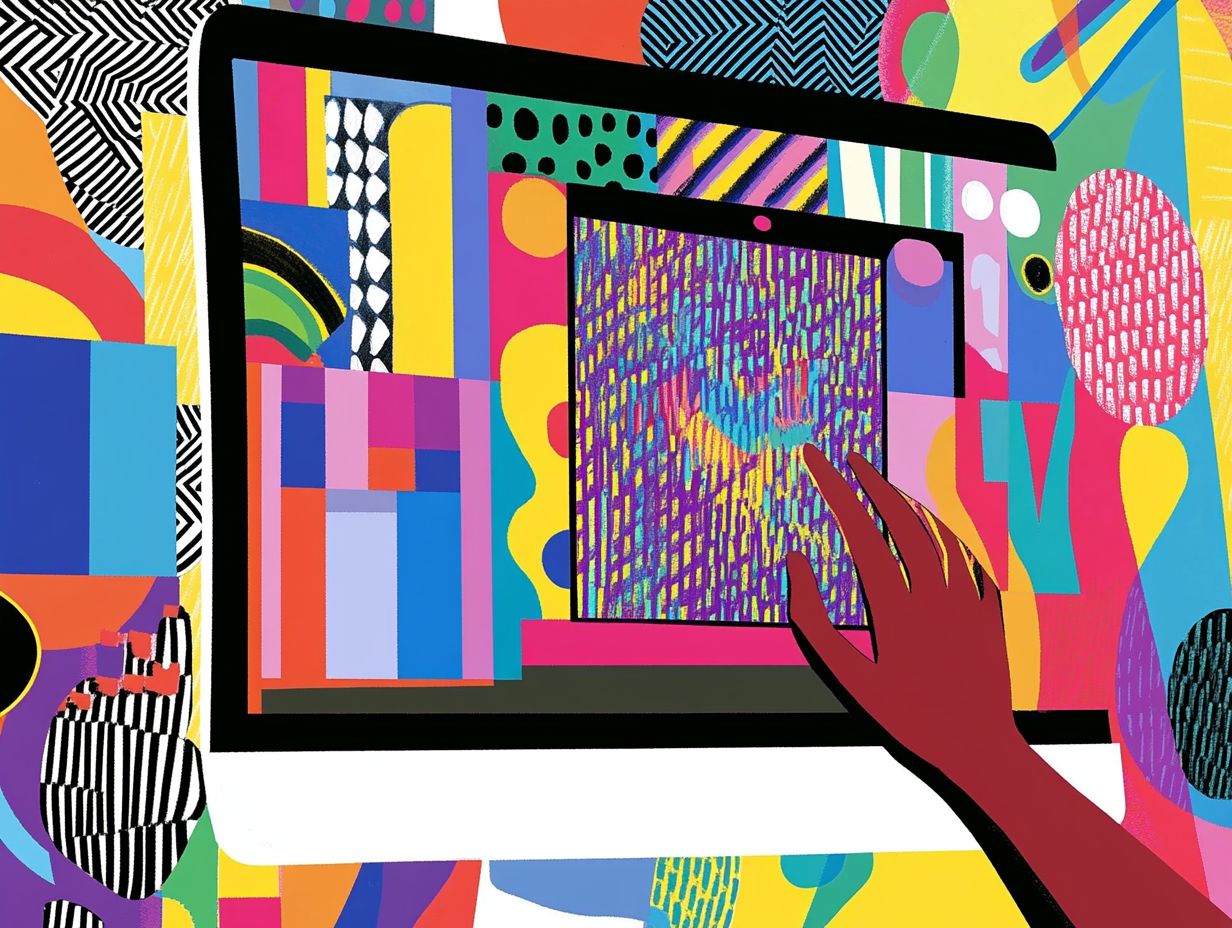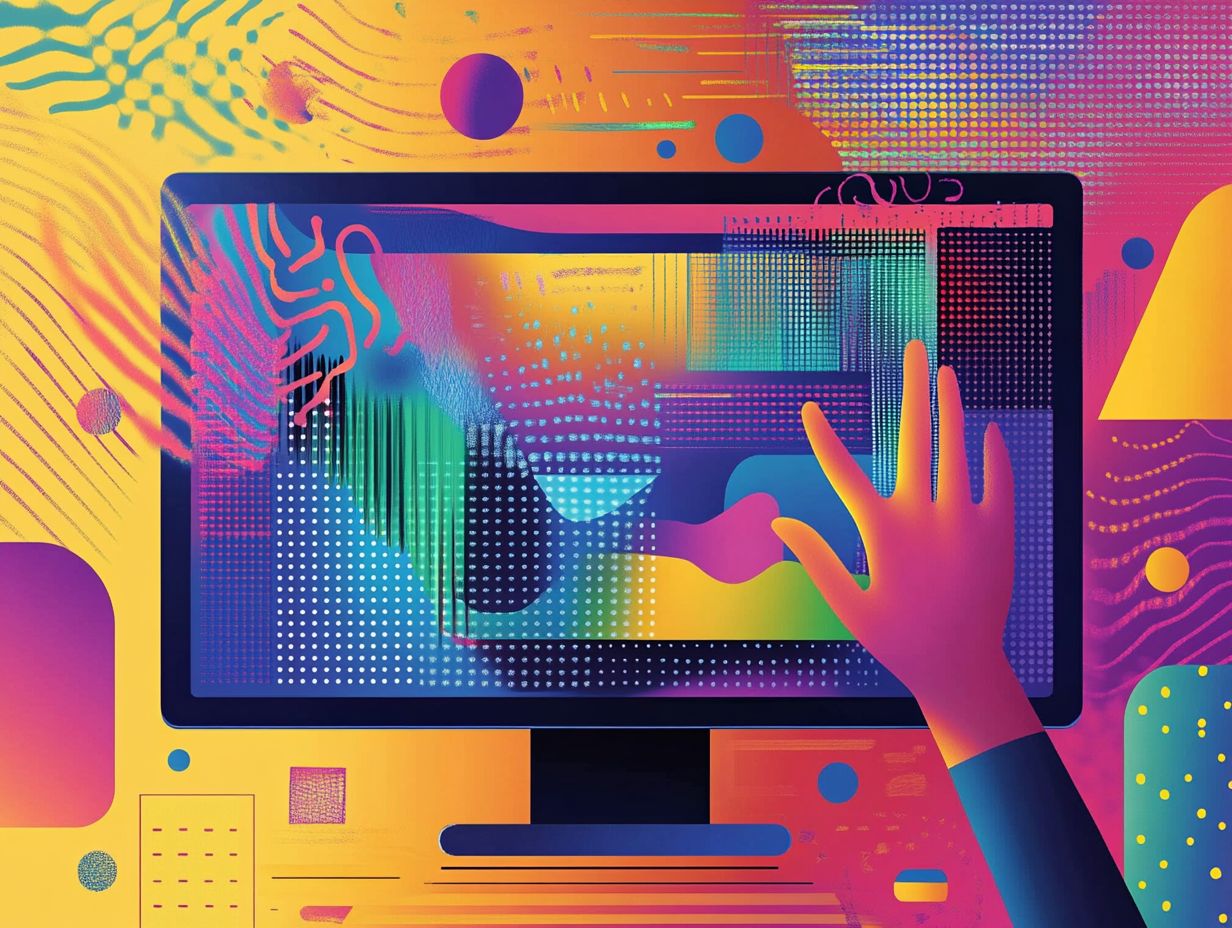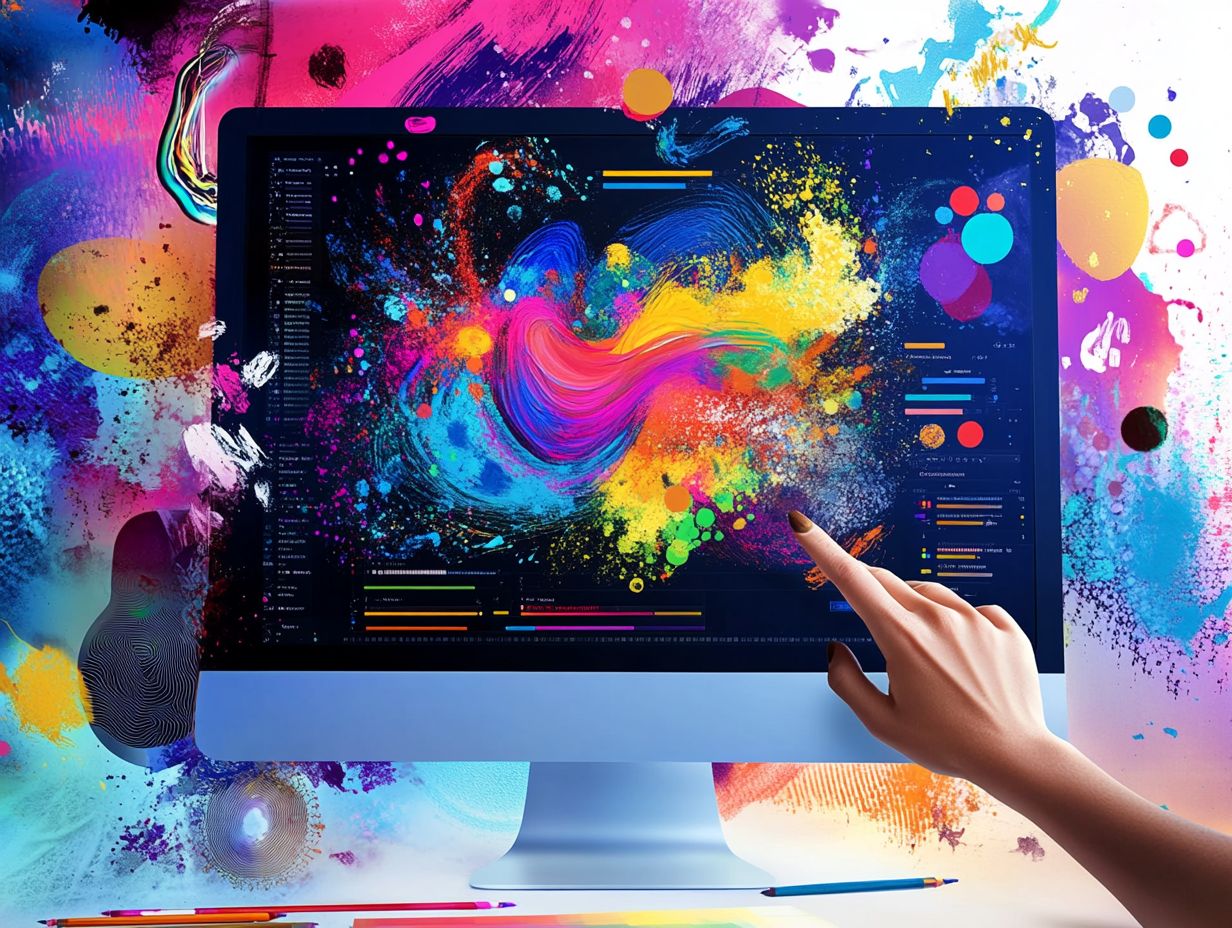Image generators are changing the way visual content is created and interacted with. By utilizing advanced algorithms, these tools can produce a wide variety of images, from realistic portraits to surreal landscapes.
This discussion will cover what image generators are, the different types including Generative Adversarial Networks (GANs) and Variational Autoencoders (VAEs), and how they operate through complex training processes.
Additionally, the conversation will address their applications across various industries as well as the ethical considerations involved in their use. The aim is to explore the world of generated imagery and its potential implications for the future.
Understanding AI Image Generators

Understanding AI image generators is important in today’s digital landscape. These innovative tools use artificial intelligence to create visual representations through image generation.
By employing advanced techniques such as deep learning and neural networks, these generators can produce images that exhibit intricate patterns and textures. This capability allows artists and designers to explore new possibilities in creativity and automation.
What is an AI Image Generator?
An AI image generator is a tool designed to create images using various algorithms and generative models that interpret user input to produce unique visual outputs. This technology utilizes mathematical frameworks to analyze the parameters set by the user, translating them into visual representations.
By employing deep learning techniques, the generator can understand styles, themes, and specific details that the user wants to include in the image. The interactive nature of this process allows users to provide real-time feedback, which helps ensure that the resulting artwork aligns with their creative vision.
Customization options enable individuals to refine the outcome, creating a personalized artistic experience that connects technology and human creativity.
Types of AI Image Generators
There are several types of AI image generators, each employing different architectures and methodologies for image synthesis. Among these, Generative Adversarial Networks (GANs) and Variational Autoencoders (VAEs) are the most notable.
GANs consist of a generator and a discriminator that work together to create high-quality images, whereas VAEs focus on encoding input images into a latent space, which facilitates efficient image reconstruction and generation.
Generative Adversarial Networks (GANs)
Generative Adversarial Networks (GANs) represent a significant advancement in image generation. They consist of two neural networks known as the generator and the discriminator, which operate in a feedback loop. The generator creates images that the discriminator evaluates against real images from the training data.
The main function of the generator is to produce images that replicate the statistical properties of real images, while the discriminator’s role is to differentiate between the generated images and authentic ones. Through each cycle of image generation and evaluation, both networks improve their capabilities. The generator refines its techniques based on feedback from the discriminator, gradually learning to create more realistic features and textures.
Concurrently, the discriminator consistently updates its parameters using optimization techniques, such as stochastic gradient descent, to enhance its ability to identify subtle differences. This adversarial process leads to notable improvements in image realism and overall network performance, highlighting the effectiveness of collaborative competition in machine learning.
Variational Autoencoders (VAEs)

Variational Autoencoders (VAEs) are a notable type of AI image generator that employs unsupervised learning to encode input images into a latent space. This latent space can then be sampled to reconstruct or generate new images with significant fidelity.
In this latent space, similar images are positioned closer together, which allows for efficient image generation. By using the principles of probabilistic modeling, VAEs not only achieve effective image reconstruction but also ensure diverse output through stochastic sampling from this latent space.
When compared to Generative Adversarial Networks (GANs), which typically focus on producing images with sharper details, VAEs are particularly effective in situations where understanding the underlying data distribution is important.
Their capability to encode various attributes and variations makes VAEs well-suited for tasks such as semi-supervised learning, anomaly detection, and creative content generation, highlighting their versatility within the domain of unsupervised learning.
How AI Image Generators Work
The operation of AI image generators involves a comprehensive training process that requires large datasets and advanced algorithms.
During the model training phase, these systems learn from extensive training data, adjusting their parameters through optimization techniques to enhance the quality and realism of the generated images.
Training Process and Data Requirements
The training process for AI image generators relies heavily on quality training data, which includes diverse image datasets that expose the model to various visual features essential for effective learning. This diversity is important because it allows the model to generalize more effectively, resulting in improved performance metrics across different tasks.
A well-rounded dataset contains a range of styles, subjects, and contexts that enhance the learning experience, leading to more realistic and versatile image outputs. The quantity of training data is also significant; large datasets often provide the necessary breadth for the model to identify intricate patterns and nuances.
When both quality and quantity of training data are prioritized, the usability of the generated images increases notably, making them suitable for a broader range of applications in creative and commercial fields.
Key Components and Algorithms
The key components of AI image generators include advanced algorithms and architectures, such as convolutional neural networks (CNNs), which are effective at feature extraction and essential for creating high-quality images.
These networks analyze complex patterns within images, learning to recognize important features like edges, textures, and shapes. By employing multiple layers, CNNs progressively refine these features, leading to a deeper understanding of the structure of the generated images.
Their layered architecture enhances the ability to capture subtle details and ensures that the final output has a high level of realism, making artificial images difficult to distinguish from real photographs. The combination of feature extraction and other algorithms further improves visual fidelity, expanding the possibilities of creativity in digital artwork.
Applications of AI Image Generators

AI image generators are utilized in various industries for a diverse set of applications, including content creation, artistic expression, generating advertising visuals, and enhancing user-driven content.
Use Cases in Different Industries
The use cases of AI image generators extend across various industries, including design applications where they function as tools for generating illustrations and developing concept art.
In graphic design, these tools enable professionals to quickly produce appealing visuals, enhancing their creative capabilities while saving time.
Advertising agencies utilize AI-generated imagery to explore unique advertising concepts and customize campaigns that resonate with different audiences, thereby maximizing engagement.
The entertainment industry also benefits from these generators by using them for character design, storyboard creation, and promotional materials, all of which help to streamline workflows and improve collaboration among teams.
By incorporating AI tools, artists and creators can effectively tackle challenges, fostering an environment that encourages inspiration and leads to more efficient and polished results.
Limitations and Ethical Considerations
AI image generators have changed the landscape of content creation, but they also come with limitations and ethical considerations.
These concerns particularly relate to the realism of the images produced and the potential copyright issues tied to generated content.
Concerns and Controversies
Concerns and controversies related to AI image generators primarily arise from ethical considerations, including potential copyright issues and the impact on user experience and accessibility in creative fields.
These technologies raise complex questions about ownership and the rights of original creators, leading to discussions about whether the work generated by artificial intelligence can be classified as original art or if it infringes on existing copyrights.
Accessibility issues come into play when users encounter barriers that limit their ability to engage with these tools, whether due to economic constraints or the required technological expertise.
The implications of these challenges extend beyond individual users, raising significant questions for the broader creative community regarding the sustainability and fairness of integrating AI into artistic practices.
Frequently Asked Questions

What is an AI image generator?
An AI image generator is a type of artificial intelligence technology that is designed to create new and original images based on a set of inputs and algorithms.
How does an AI image generator work?
An AI image generator uses a combination of machine learning, deep learning, and neural networks to analyze patterns and data in existing images and then generate new ones based on this analysis.
What are the components of an AI image generator?
An AI image generator typically consists of a training dataset, a generator network, a discriminator network, and a feedback loop. The training dataset is used to teach the generator network how to create new images, while the discriminator network evaluates the quality of the generated images. The feedback loop allows the generator network to continuously improve its output based on the evaluation from the discriminator network.
Can an AI image generator create realistic images?
Yes, advanced AI image generators have the capability to create highly realistic images that can sometimes even fool humans into thinking they are real. This is due to the complex algorithms and data analysis used in the generation process.
What are the applications of AI image generators?
AI image generators have a wide range of applications, including in the fields of art, design, fashion, gaming, and advertising. They can also be used for creating realistic images for virtual and augmented reality experiences. What is augmented reality read in my last post here.
What are the potential benefits of using an AI image generator?
Using an AI image generator can save time and resources for artists and designers by automating the image creation process. It can also provide a source of inspiration and creativity for those in need of new ideas or designs.
